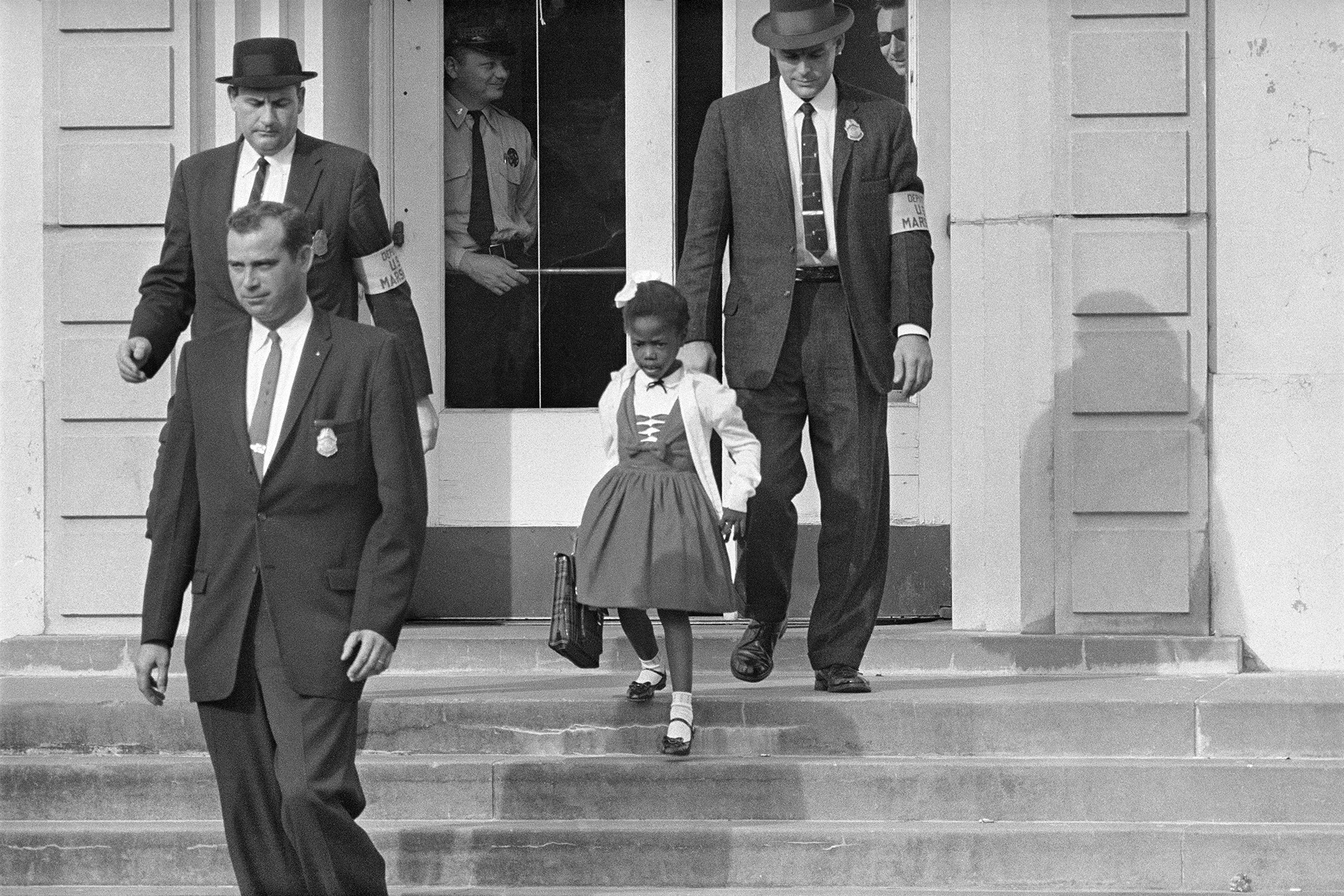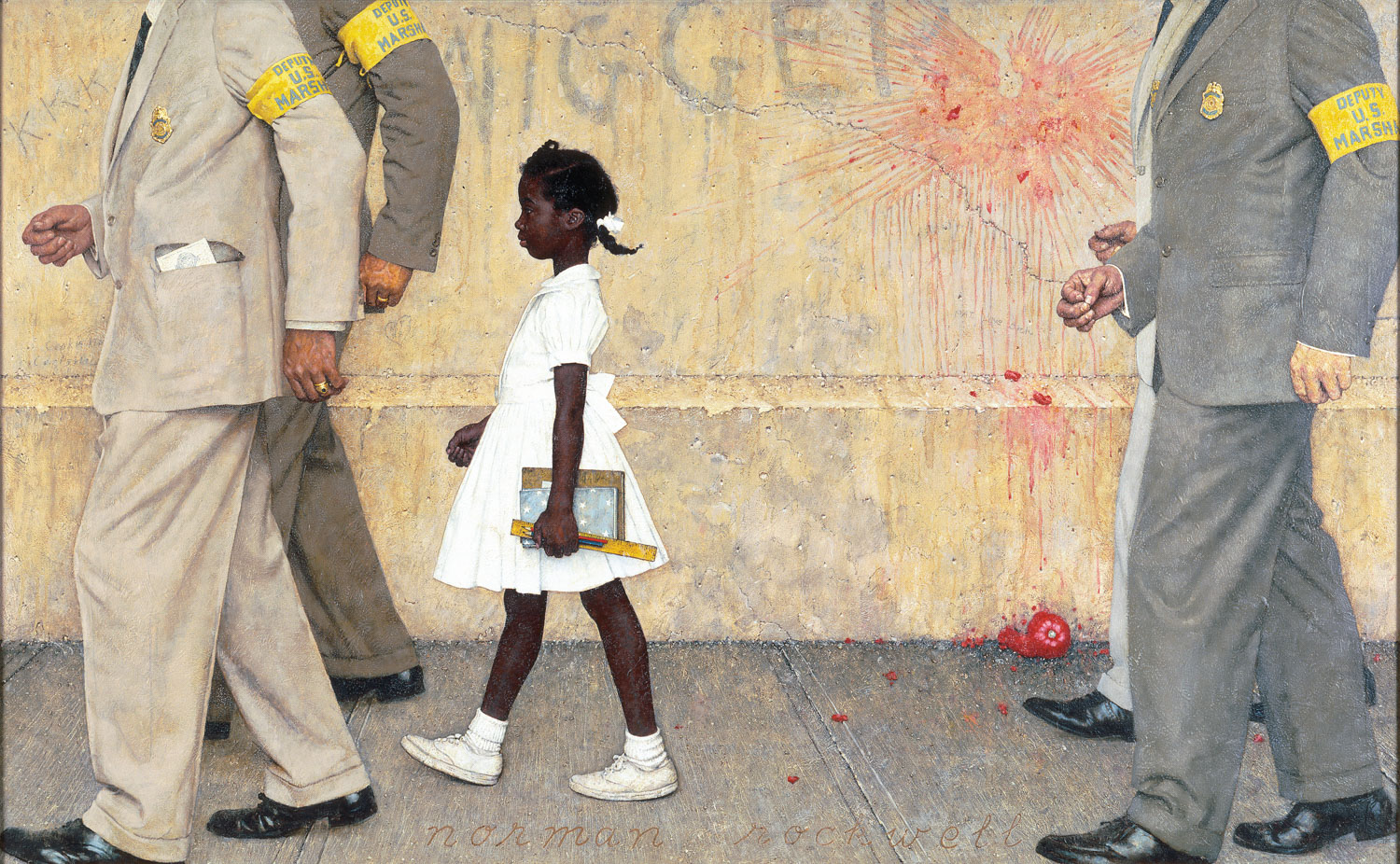
Today, I want to take a moment to reflect on a significant event in American history that not only changed the landscape of education but also became a symbol of the Civil Rights Movement. Let’s talk about Ruby Bridges and the powerful painting by Norman Rockwell that commemorates her brave journey into an integrated school.
On November 14, 1960, a young Ruby Bridges, only six years old, walked through the doors of William Frantz Elementary School in New Orleans, Louisiana, marking a monumental moment in the desegregation of public schools. This wasn’t just any school day; it was the first day of integrated schools in the Deep South, a day that should have been filled with excitement and hope. Instead, it was met with hostility and chaos.
Picture this: as Ruby and her mother approached the school, they were met with a mob of angry white protesters, shouting slurs and threatening violence. It was terrifying, to say the least. In fact, as soon as Ruby entered the school, white parents pulled their children out, and nearly all the teachers, except for one brave soul named Barbara Henry from Boston, refused to teach her. Can you imagine being the only child in your class for an entire year? That’s exactly what Ruby experienced. Barbara Henry became her only teacher, dedicating herself to Ruby’s education as if she were teaching a whole classroom.
On that first day, Ruby and her mother were confined to the principal’s office, unable to move to a classroom due to the chaos outside. It wasn’t until the second day that things began to shift slightly. A courageous white minister, Lloyd Anderson Foreman, walked his daughter through the angry crowd, declaring, “I simply want the privilege of taking my child to school.” This act of bravery inspired other white parents to slowly start bringing their children back to school, but Ruby remained the sole student in her class for quite some time.
Each morning, as Ruby walked to school, she faced unimaginable threats. One woman even threatened to poison her, while another held up a black baby doll in a coffin, a grotesque symbol of the hate she faced. The U.S. Marshals were assigned to protect her, which meant Ruby could only eat the food she brought from home, and she was barred from participating in recess. Can you imagine the weight of that on a child’s shoulders? Yet, through it all, Ruby showed incredible resilience and strength.
Fast forward to 1964, and we see Norman Rockwell capturing this poignant moment in his iconic painting, “The Problem We All Live With.” The painting depicts Ruby, flanked by four deputy U.S. marshals, on her way to school. What’s striking is how Rockwell chose to frame the scene: the marshals’ heads are cropped at the shoulders, making Ruby the focal point. Behind her, the wall bears the racial slur “nigger” and the letters “KKK,” alongside a smashed tomato, remnants of the anger directed at her.
This painting isn’t just a piece of art; it’s a powerful reminder of the struggles and sacrifices made in the fight for civil rights. It encapsulates the fear, bravery, and determination that Ruby embodied during that turbulent time.
As we reflect on Ruby Bridges’ story and the incredible courage of those who stood by her, let’s remember that the fight for equality and justice continues. Ruby’s journey is a testament to the strength of the human spirit and the importance of standing up against hate and discrimination.
Let’s honour this legacy by fostering understanding and compassion in our communities today. Ruby Bridges not only opened the doors to a school but also paved the way for future generations to strive for a more equitable world.

